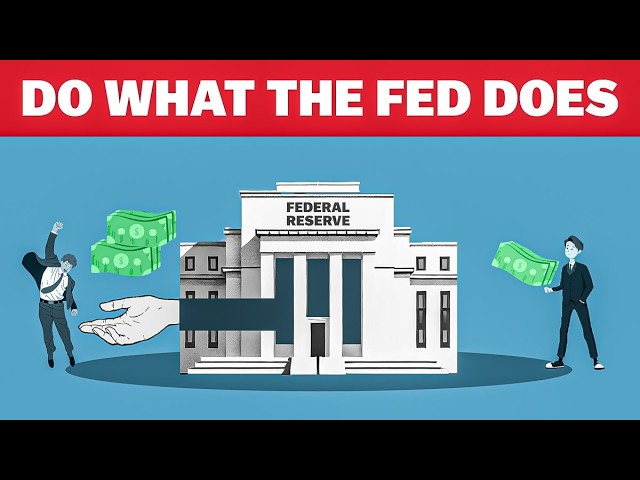The Federal Reserve continues to stumble through interest rate policies seemingly clueless while the US economy barrels ahead.
Last month, it slashed interest rates by half a point, cutting the benchmark rate to 4.75%–5%. They called it a “recalibration” of policy due to retreating inflation and slower job growth.
Now, the Fed is hedging on further cuts, with mixed inflation data and a relatively strong economy making them unsure how to proceed. Christopher Waller, a top Fed official, said yesterday that caution was their priority right now.
“The data is mixed. We need to move slower now than we did in September,” he said. Just last week, the consumer price index came in hotter than expected, and September saw 254,000 jobs added to the market.
Mixed signals everywhere
Waller admitted progress on inflation has been anything but smooth, saying it’s felt more like a “rollercoaster” over the last year and a half. Some prices remain stubbornly high, despite the Fed’s efforts to bring inflation back to its 2% target.
But Waller doesn’t see a recession coming anytime soon, saying the labor market is still “healthy,” and there’s no sign of a major slowdown in economic activity. The Fed wants to reach a “neutral” policy stance that neither boosts nor suppresses growth, but they’re sure taking their sweet time.
Waller’s comments echoed those of New York Fed President John Williams, who said that two more quarter-point rate cuts this year are likely.
The central bank’s projections align with Williams’ “very good base case” for two cuts before the year is out, aiming to bring the benchmark rate to a more neutral level.
Minneapolis Fed President Neel Kashkari also jumped into the debate, saying the central bank could consider further “modest reductions.” Though he did warn that any decision would be data-driven.
The jobs report wild card
The Fed faces a wildcard in the coming weeks. We got skewed reports from the aftermath of hurricanes in the southern US and ongoing factory strikes at Boeing.
The next jobs report, scheduled just days before the US presidential election, could paint a distorted picture of the labor market.
Waller said the report could show a “significant but temporary” loss of jobs, estimating the impact at more than 100,000 fewer jobs in the next set of numbers.
Despite this, he feels pretty confident that the Fed could hit its 2% inflation target while keeping the labor market strong.
“The job market’s still healthy. Inflation’s starting to fall,” Williams also said. “Our policy is in a good spot to keep things moving in the right direction.”
But not everyone is convinced. Some economists are starting to ask tough questions about whether the Fed’s rate policy (and by extension, its existence) really matters at all.
Is the Fed even in control?
Some believe the central bank is simply reacting to the markets, rather than driving any meaningful changes.
Aswath Damodaran, a finance professor at New York University, recently pointed out that the federal funds rate is a short-term rate that has little effect on the rates that actually matter, like those on mortgages, business loans, or corporate bonds.
Between 2004 and 2006, for instance, the Fed raised its rate by more than 4%, but triple-B bond yields only increased by less than 1%. In other words, the market mostly ignored what the Fed was doing.
Damodaran believes that markets move based on real economic factors like growth expectations and inflation, not Fed policy.
Wall Street’s Spencer Jakab even compared Jerome Powell to the Wizard of Oz, saying the Fed’s power over the stock market is more myth than reality.
Powell’s decision to cut rates in 2007 initially boosted stock prices, but a recession followed just months later, proving the Fed’s influence only goes so far.
Out of control, or out of touch?
Jakab cited work by Goldman Sachs strategist David Kostin, who showed that the economy, not the Fed, has been the key driver of markets during rate-cutting cycles.
The idea that the Fed is more of a follower than a leader in the economy is becoming popular. Damodaran summed it up: “The Fed reacts to markets, not the other way around.”
If true, investors might start paying less attention to the central bank’s moves and focus instead on economic fundamentals. Last year, fears of over-tightening kept many investors on the sidelines.
But if they had ignored the Fed’s rate hikes and focused solely on economic data and corporate earnings, they might have stayed in the market and reaped bigger gains during the market’s recovery.





